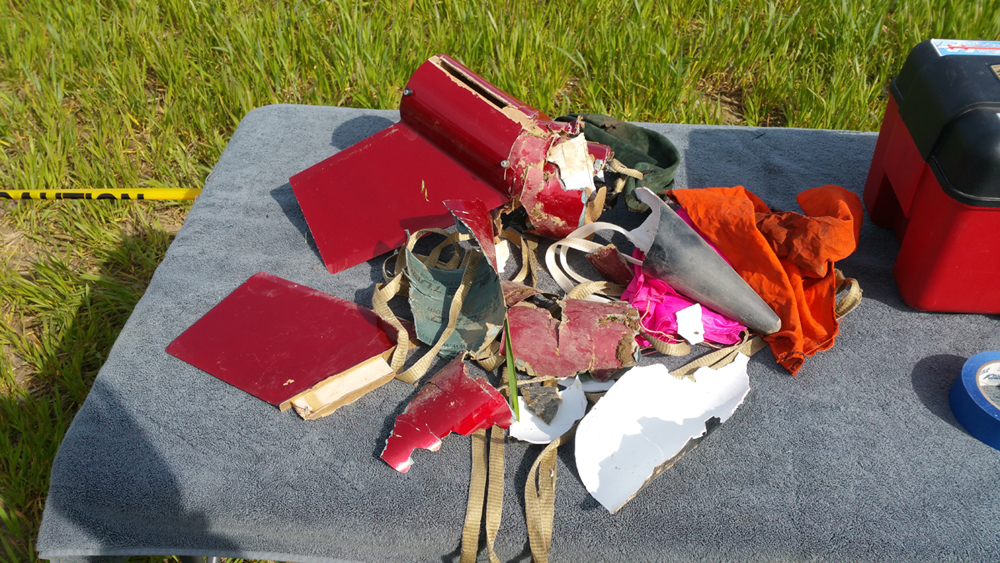I'm really curious about these failures and would like to see some documentation on which Vmax motors failed, and what size rockets they were in.
A question I have is whether the failures occur when the delay has not been adjusted, and/or the specified CTI igniter was not used, and/or the igniter was not in contact with the delay grain. Here is a photo of an unburned delay grain from post 18.
In the photo it does not appear that the delay grain ever lit, and that is was not drilled. One wonders if the igniter was not in contact with the delay grain, or if a non factory igniter or e-match was used to start the motor.
I'm also wondering if contamination of the delay grain surface coupled to the shortness of the burn might inhibit initiation of the delay grain combustion if/when the grain is not drill for delay reduction. The act of drilling the delay grain exposes fresh surface and creates a cavity that might not be snuffed out due to the rapid shut down.
I have not seen any information whether the motors were prepared and used according to the printed instruction sheet, and I wonder if that could be part or all of the problem.
1.) Vmax motors do not have a BP starter pellet. If you use an e-match instead of the supplied igniter to start the motor, there may not be energy delivered to the delay grain to ignite it before the motor burns out.
2.) Evenif the proper igniter is not in contact with the delay grain, there may not be enough energy delivery to the delay grain to ignite it before the motor burns out.
3.) When used in minimum diameter rockets, the delay may not need to be drilled to shorten the delay which could reduce the probability of delay grain ignition for delay grain Kn issues, and
4.) In minimum diameter rockets, the velocity at burnout is supersonic, and the base vacuum on the rocket can be far below ambient which could quench a marginally burning delay.
5.) In larger diameter rockets, delay grain drilling is required, and the velocity is likely not to be supersonic at motor burnout. Under those conditions, the delay Kn is higher and the base vacuum is not that far below ambient so it is less likely that the delay grain would be quenched by a rapid decrease in chamber pressure.
I've heard that an unexpectedly large number of Vmax motors with motor ejection did not function properly but I don't believe a
documented database has been complied to definitively prove why the rockets with Vmax propellant did not have their ejection charge fire. I think we need real statistical data other than anecdotal reports of ejection charge failures in Vmax motors to determine why this is happening.
I would like to see is a table of the failed flights containing
1.) the rocket motor label into (e.g. Pro38 H400) and the motor delay shortening value (e.g -0, -3, -5, -7, -9).
2.) Was the supplied igniter used. If not why not and what was used in its' place.
3.) Rocket diameter, mass, and anticipated maximum velocity. (If the velocity data is not available we can come close in a sim with the rocket diameter and mass.)
I speculate we are going to find that the problems occurs:
1.) In minimum diameter rocket attaining supersonic speed at burnout.
2.) In motors where the delay was not shortened.
3.) In motors where the supplied igniter was not used and/or not installed touching the delay grain.
4.) In the longer (higher grain count) motors of a given diameter where the nozzle area is large providing the lowest Kn for the delay grain, especially if they are not shortened.
I would appreciate anyone who have experienced no ejection recoveries to post the details of those flights.
Bob






